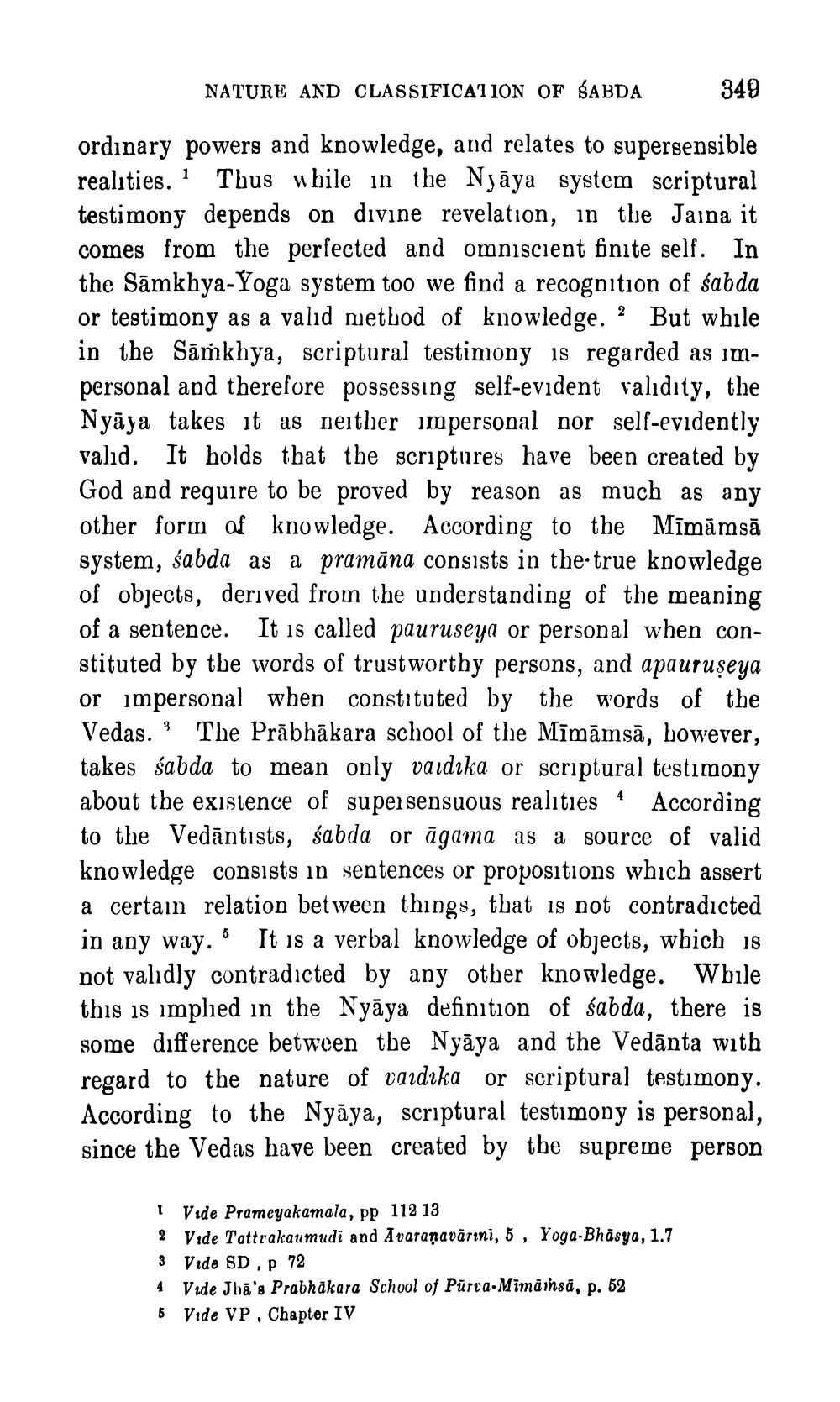________________
NATURE AND CLASSIFICATION OF SABDA
ordinary powers and knowledge, and relates to supersensible realities. Thus while in the Nyaya system scriptural testimony depends on divine revelation, in the Jaina it comes from the perfected and omniscient finite self. In the Samkhya-Yoga system too we find a recognition of sabda or testimony as a valid method of knowledge. But while in the Samkhya, scriptural testimony is regarded as impersonal and therefore possessing self-evident validity, the Nyaya takes it as neither impersonal nor self-evidently valid. It holds that the scriptures have been created by God and require to be proved by reason as much as any other form of knowledge. According to the Mīmāmsā system, sabda as a pramana consists in the true knowledge of objects, derived from the understanding of the meaning of a sentence. It is called pauruseya or personal when constituted by the words of trustworthy persons, and apauruṣeya or impersonal when constituted by the words of the Vedas. The Prabhakara school of the Mīmāmsā, however, takes sabda to mean only vaidika or scriptural testimony about the existence of super sensuous realities 4 According to the Vedantists, sabda or agama as a source of valid knowledge consists in sentences or propositions which assert a certain relation between things, that is not contradicted in any way. It is a verbal knowledge of objects, which is not validly contradicted by any other knowledge. While this is implied in the Nyaya definition of sabda, there is some difference between the Nyaya and the Vedanta with regard to the nature of vaidika or scriptural testimony. According to the Nyaya, scriptural testimony is personal, since the Vedas have been created by the supreme person
3
5
1
2
349
1 Vide Prameyakamala, pp 112 13
2 Vide Tattrakaumudi and Avaraṇavārini, 5, Yoga-Bhāsya, 1.7
3 Vide SD, p 72
4 Vide Jha's Prabhakara School of Purva-Mimäinsä, p. 52
5 Vide VP, Chapter IV




